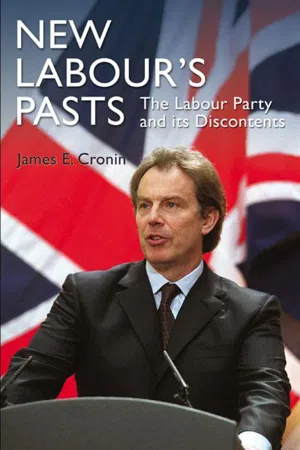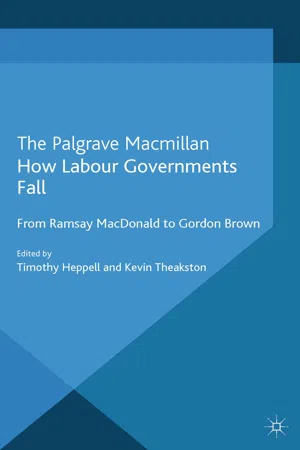Clement Atlee
Clement Attlee was a British politician who served as the Prime Minister of the United Kingdom from 1945 to 1951. He was the leader of the Labour Party and is best known for his role in implementing the welfare state and nationalizing key industries after World War II. Attlee's government also oversaw the decolonization of India and the establishment of the National Health Service.
7 Key excerpts on "Clement Atlee"
- eBook - ePub
- Mark Dunton(Author)
- 2021(Publication Date)
- Pen & Sword History(Publisher)
...Attlee was a formidable political operator, with passionately held convictions. From 1906 to 1909, he took on social work in the east end of London which brought him to socialism and the Labour Party. Attlee’s role in the wartime coalition government, as Lord Privy Seal, and then Deputy Prime Minister to Churchill, is often overlooked. He was incredibly efficient in his chairing of meetings, and handling of paperwork, brisk and decisive, and this highly competent approach was to become a hallmark of his premiership. Attlee’s Labour Party successfully caught the public mood in the general election of July 1945, promising ‘a land fit for heroes’. The result was a stunning landslide victory. The achievements of the Labour Governments of 1945-51 were remarkable, including the creation of the National Health Service and the establishment of the modern welfare state, with the introduction of extensive sickness and unemployment cover. Major sectors of industry were taken into public ownership, including the coal and steel industries, the electricity and gas supply, the railways, and the Bank of England. Foreign Secretary Ernest Bevin was a driving force behind the creation of the North Atlantic Treaty Organisation (NATO), the military alliance for the countries of the West created as a counterweight to the Soviet Union. The Labour Government also granted India independence. Following this period of intense activity on a grand scale, by 1951 the Labour government was exhausted, and it lost the election of October that year. ‘There were few who thought him a starter, many who thought themselves smarter. But he ended PM, CH and OM, an Earl and a Knight of the Garter.’ (Self-penned limerick), Clement Attlee...
- Keith Layborn(Author)
- 2002(Publication Date)
- Routledge(Publisher)
...(Richard) Clement Attlee 1883 1967 On his death in 1967 The Times concluded that Attlee was ‘one of the least colourful but most effective of the British Prime Ministers of this century’. Indeed, as Prime Minister he presided over the granting of independence to India, the formation of the North Atlantic Treaty Organization (NATO), the development of Britain’s modern welfare state, and the formation of the National Health Service (NHS). His impact upon the Labour Party, which he led from 1935 to 1955, was similarly dramatic to the extent that, in the 1980s, prominent figures in the then-declining Labour Party looked back to the Attlee era, establishing some sort of mythology around a reticent and unassuming leader. Yet the gibes against him still stick, most obviously the Winston Churchill one that ‘An empty taxi drew up outside 10 Downing Street, and out walked Mr. Attlee’. Attlee was born in Putney on 3 January 1883, the seventh child of Henry Attlee and Ellen Watson. He was raised in an upper-middle-class family and educated at Haileybury School, a public school founded by the East India Company, between 1896 and 1901, where he enjoyed cricket and literature. He then went to University College, Oxford, emerging with a second-class degree in History. At this point he studied law, the profession of his father, and became a barrister in 1906. However, in October 1905 he went to Haileybury House (associated with his public school), a boys’ club in the East End of London and by 1907 he had become manager of the club. At this point he joined the socialist Stepney Independent Labour Party and decided upon a political career. This meant both the abandonment of his legal career and his political commitment to the Conservative Party...
- eBook - ePub
- Robert Pearce(Author)
- 2006(Publication Date)
- Routledge(Publisher)
...First, there is the issue of personnel. In particular, what are we to make of the Prime Minister, Clement Attlee? Was he, as Churchill joked, merely a ‘sheep in sheep's clothing', ‘a modest man with plenty to be modest about'? Historians have described him as smaller, not larger, than life, ‘underwhelming' rather than overwhelming. But how could such an extraordinarily ordinary man have led the Labour party for twenty years and stayed at the top of the greasy pole for six? Or was he in fact a highly efficient executive and superb chairman of committee, with an excellent understanding of his party and grasp of the government machine, one of the very best prime ministers in modern history? Both Attlees have found their places in recent historiography. Into the impenetrable silences of this essentially shy man—dubbed by George VI ‘Clam', rather than Clem, Attlee, a man so self-effacing that he sometimes disappeared altogether—have been read both inadequacy and delphic understanding. Attlee's ability to parry reporters' queries and avoid self-revelation has seemed to some historians to betray a determination to preserve some personal mystery. Was Attlee the proverbial sphinx, guarding its secret, or (as Bismarck said of Louis Napoleon) a ‘sphinx without a riddle'? More fundamentally, what place should be assigned to Attlee's governments in British history? Were the years 1945–51 a period of bold legislative achievement which changed Britain permanently—though whether for good or ill is another area of contention—and established a consensus in British politics that lasted until the Thatcher years, in the 1980s? Or, on the contrary, was this period one of wretched anticlimax, a dénouement after the truly revolutionary years of the ‘people's war'? According to this latter view, the consensus between the major parties had been forged before the 1945 election, so that all Labour had to do afterwards was follow the instructions on wartime blueprints...
- eBook - ePub
- Robert Pearce, Graham Goodlad(Authors)
- 2013(Publication Date)
- Routledge(Publisher)
...Nevertheless Attlee and the Labour Party beat Churchill and the Conservatives in the 1945 election by a huge majority, and over the next six years Attlee’s administration made fundamental changes in Britain’s society, economy and external policy. Attlee was described in his Times obituary in 1967 as ‘one of the least colourful and most effective of British Prime Ministers of this century’. 9 To the obituarist, there seemed a glaring paradox between a ‘social revolution’ that was smoothly effected and the qualities of the man who presided over it. Could dullness and effectiveness possibly go together? In fact, there was no paradox at all. Indeed Attlee’s under-whelming personality goes a long way towards explaining his political success. The rise to the premiership Born on 3 January 1883, into an upper-middle-class family, Clement Attlee was educated at Haileybury and then University College, Oxford. He then studied law and became a barrister in 1906. Yet instead of predictably following in his father’s legal footsteps, he fell back on the private income provided by his family and took a voluntary job as live-in manager of Haileybury House, a boys’ club in the East End of London. It was the making of him. Though ‘painfully shy’, 10 he found fellowship with the East Enders and soon lost his prejudiced belief that the poor were poor because of moral failings. The fault lay not with them, but with society’s dominant doctrine of laissez-faire capitalism. The only difference between the rich and poor was their wealth: as individuals, he now judged, they were equal. Attlee became an ethical socialist: as he put it, heart first, head afterwards. 11 When he later said that he believed in ‘the ethics of Christianity’, he meant this seriously. He valued other people, realized that they were as important as himself, and wished to promote social changes that would improve their lives...
- eBook - ePub
New Labour's Pasts
The Labour Party and Its Discontents
- James E. Cronin(Author)
- 2016(Publication Date)
- Routledge(Publisher)
...Most important was the powerful legacy of achievement bequeathed to the party by the governments of 1945–51. By almost any standard, the Attlee governments were a resounding success. Labour had been elected in 1945 on a series of pledges that were fulfilled almost to the letter. The party promised to create a genuine welfare state by reorganising existing social services, by adding programmes for those previously left out, and by the establishment of the National Health Service. All this they did. The party also promised to implement policies that would maintain a 'high and stable' level of employment. This, too, came to pass, even if it is difficult to know precisely whom, or what, to credit for the achievement. The party also committed itself to keeping in place a variety of policies – in terms of taxation, price controls, controls over land and rents, regional policy –aimed at making Britain a fairer and more egalitarian society. These promises were also kept, even at the cost of some popular resentment and loud opposition from the Tories, from business and from the self-appointed spokesmen of the middle classes. Not only did Labour deliver on its promises. The Labour governments of 1945–51 also presided successfully over a difficult transition from war to peace and proved beyond doubt the party's capacity to govern. There were bad moments, of course: the fuel and exchange crises of 1947 were the worst; and the devaluation of the pound in 1949 was a wise move that nonetheless was often portrayed as a failure. And there were divisions and unseemly squabbles as well: over NHS charges, over foreign policy and over rearmament. But for the most part, Labour governed in a reasonably unified fashion over a recovering Britain in which things were steadily and visibly improving...
...He had undoubtedly found his political persona as the humble servant of the party; and it would certainly not be possible to dislodge him as leader by outmanoeuvring him on policy issues. It requires superhuman skill to chop off the head of anyone who so meekly but resolutely refuses to stick his neck out. Similarly, Attlee was hard to pin down to any precise ideological position. As in the past, he refused to support the hunger marches of Wal Hannington’s National Unemployed Workers’ Movement; but he did share a platform with Hannington. He also supported the Jarrow march of early 1936 and was also a prominent supporter of the National Council of Civil Liberties, which Special Branch believed to be a communist front. In addition, he wrote a volume, The Labour Party in Perspective, for the Left Book Club, being among a minority of non-communist contributors. Life was easier for Attlee in parliament. From 1937 he was, as leader of the opposition, paid a ministerial salary of £2,000 a year. In addition, he was less frenetically busy than before the general election: the PLP had tripled in size and so he did not have to speak on every conceivable subject. He distributed the limited patronage at his disposal wisely. For instance, he gave Hugh Dalton the position which he coveted, as Labour spokesman on foreign affairs. Attlee was now a practiced performer in the House of Commons, and made several speeches of distinctive quality. In January 1936 he was called upon to speak on the death of George V after the Prime Minister, Stanley Baldwin, who spoke for twenty minutes with ‘every word perfectly chosen, and perfectly balanced’. He was a hard act to follow. ‘We on our side thought he [Attlee] would jar, and do badly’, noted a Conservative; ‘but on the contrary he was excellent … He too held the House.’ 4 Several of his other speeches were similarly well received...
- eBook - ePub
How Labour Governments Fall
From Ramsay Macdonald to Gordon Brown
- T. Heppell, K. Theakston, T. Heppell, K. Theakston(Authors)
- 2013(Publication Date)
- Palgrave Macmillan(Publisher)
...He had largely failed as leader of the opposition between 1935 and 1939, and was only rescued by the opportunities of war (Crowcroft, 2011). The cunning, ruthless political operator of 1940–47 was in decline, his inadequacies and limitations more apparent. As Kenneth Morgan put it, he had invaluable qualities for running a government with an agreed programme when things were going well, but performed less well in crises that demanded energy, grip and ideas (Morgan, 1984: 351). Nor was he politically skilled on economic issues, the Achilles’ heel of the government. Peter Hennessey notes that Attlee’s lack of grasp of the British economy and economic diplomacy was ‘a serious weakness’ (Hennessy, 2000: 160). The presentational, campaigning and communication aspects of politics had always been Attlee’s weakest areas. He was best at managing (and controlling) those around him, not at ‘the vision thing’. As leader and prime minister it was his responsibility to instil a sense of purpose in his government, or at least find someone who could. Attlee had always relied on Morrison for that, but ‘consolidation’ was hardly a war cry fit to rouse the troops. His example shows that a prime minister does not necessarily have to give a strong policy lead or provide ideas and a vision for a government to be successful, provided that the Cabinet and the party have a sense of purpose and remain united – but that was not the case by 1950–51. It was the February 1950 general election, not the October 1951 one, that destroyed the huge Labour majority won in 1945. Labour lost 78 seats while the Conservatives gained 88, Attlee’s majority in the House of Commons slumping to just six...






